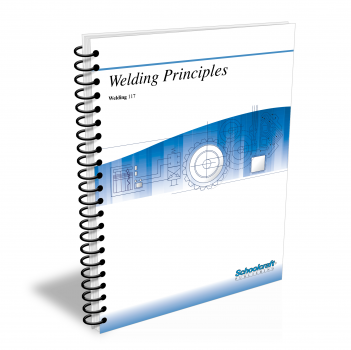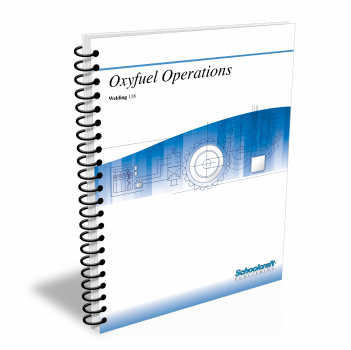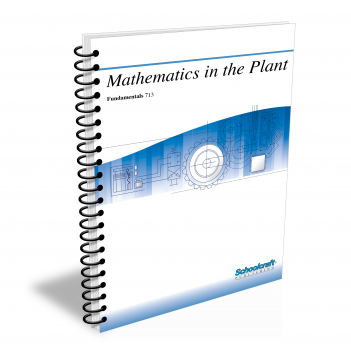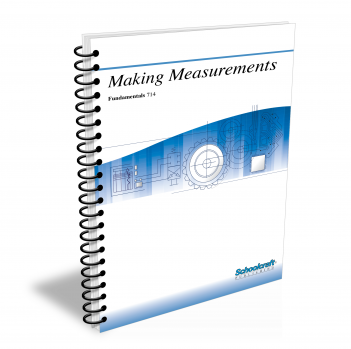Arc Welding Operations
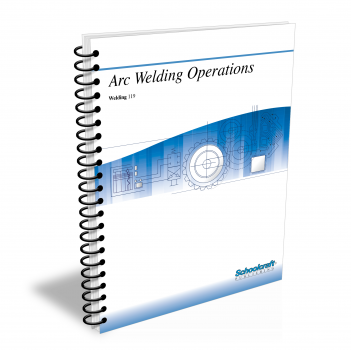
Course Number: 119
The Arc Welding Operations textbook covers shielded metal arc welding, selecting electrodes for SMAW, gas metal and tungsten arc welding, preheating, reheating, welding ferrous and nonferrous metals, pipe welding, hard facing, and rebuilding.
Does your curriculum require additional topics not included in this textbook? Build a customized version of the Arc Welding Operations textbook below.
Recommended Contact Hours – 15
Preview a Chapter
Available Supporting Material
- Table of Contents
- Exam Copies
- Suggested Titles
Table of Contents
Chapter 1: Shielded Metal Arc Welding
Topics: Welding current; Arc length; Welding machines; Polarity; Tools and accessories; Electrodes; Setup and operation; Personal protection
Learning Objectives:
- Explain how the shielded metal arc welding process works.
- Tell what provides the shield in shielded metal arc welding.
- Define arc length and explain its importance.
- List factors to consider when selecting an electrode.
- Describe the personal protective equipment necessary for welding.
Chapter 2: Selecting Electrodes for SMAW
Topics: Electrode identification; Current ranges; Electrode coverings; Handling, storing, and conserving electrodes
Learning Objectives:
- Explain the factors involved in selecting SMAW electrodes.
- Explain how to identify different welding electrodes.
- Give examples of several kinds of electrode coverings and tell when each is used.
- Describe correct procedures for handling, storing, and conserving electrodes.
Chapter 3: Gas Metal Arc Welding
Topics: GMAW vs SMAW; Metal-transfer methods; Shielding gases; Electrode wire; Equipment and accessories; Gun operation; Safety
Learning Objectives:
- Name and describe the three basic types of metal transfer for GMAW.
- Name the most common shielding gases used in GMAW and tell what factors influence their selection.
- List factors that affect the selection of an electrode for GMAW.
- Describe GMAW gun operation.
Chapter 4: Gas Tungsten Arc Welding
Topics: GTAW process, equipment, current, torches, and electrodes; Shielding gases; Filler metals; Adding filler metal; Spot welding; Safety
Learning Objectives:
- List the advantages of GTAW over other welding processes.
- Describe the equipment and supplies needed for GTAW.
- Explain the purpose of the electrode in GTAW and tell how this differs from other types of welding.
- Properly select shielding gases and filler metals for GTAW.
- Describe how to use GTAW to weld common metals.
Chapter 5: Other Welding Processes
Topics: Resistance, flash, percussion, flux-cored arc, submerged arc, plasma arc, stud, electron beam, laser beam, friction, and ultrasonic welding
Learning Objectives:
- Describe resistance spot welding and resistance seam welding.
- Define flash welding, upset welding, and percussion welding, and tell how they differ.
- Explain how submerged arc welding and plasma arc welding differ from other arc welding methods.
- Describe the three forms of friction welding.
- Describe two advantages of ultrasonic welding.
Chapter 6: Preheating and Postheating
Topics: Stress; Changes in properties; When to preheat and postheat; Preheating equipment and methods; Spot preheating; Postheating methods
Learning Objectives:
- Describe the effects of uneven or rapid heating and cooling on base metals and weld beads.
- Define the heat-affected zone and tell what changes can occur there during welding.
- Explain the benefit of preheating and when it should be used.
- List several factors in welding jobs that make postheating advisable.
- Describe methods and materials for preheating and postheating.
Chapter 7: Welding Ferrous Metals
Topics: Ferrous metal identification; Edge preparation; Welding cast iron, carbon steel, and alloy steel
Learning Objectives:
- Define ferrous metals and describe their characteristics, including weldability.
- Explain cleaning and edge preparation required prior to welding ferrous metals.
- Name the welding processes and practices that are used for different types and thicknesses of ferrous metals.
- List several different electrode types and their advantages for welding ferrous metals.
- Explain specific procedures to use when welding alloy steels.
Chapter 8: Welding Nonferrous Metals
Topics: Nonferrous metal identification; Edge preparation; Cleaning; Welding aluminum, stainless steel, nickel, and copper
Learning Objectives:
- Name the special properties of several nonferrous metals and explain how these properties affect welding preparations and procedures.
- Describe some of the methods of identifying different nonferrous metals.
- Compare seven arc cutting processes used for edge preparation of nonferrous metals.
- Explain proper methods of cleaning nonferrous metals prior to welding.
- Identify the welding processes that are suitable for nonferrous metals.
Chapter 9: Pipe Welding
Topics: Piping systems and joints; Codes; Pipe materials; Repair safety; Arc, oxyfuel welding processes; Types of welding joints; Edge preparation and fitup
Learning Objectives:
- Compare the advantages of welded pipe joints to bolted or screwed connections.
- Discuss pipe welding codes and what they cover.
- List the welding processes used for joining pipe and their advantages and disadvantages.
- Identify some special methods and accessories that are used in pipe welding as opposed to flat welding.
- Give examples of the uses of preheating and postheating in pipe welding.
Chapter 10: Hard Facing and Rebuilding
Topics: Surfacing alloys; Base metals; Preheating; Surface bonding; Oxyacetylene, manual arc, and automatic hard facing; Thermal spraying
Learning Objectives:
- List several purposes of hard facing and rebuilding.
- Identify the different types of surfacing alloys and their particular uses.
- Describe effective cross-checking and explain why it is desirable.
- Explain the special techniques used in hard facing and tell why they are necessary.
- Name the welding processes used in hard facing and tell why they are adapted to this work.
Request Exam Copies
Exam Copies
Ready to see a copy of our textbooks? After selecting which textbooks you’d like to review for your course, you can submit your request by either logging in or creating an account so we know where to ship your exam copies. A representative from Schoolcraft will contact you to confirm and finish processing your request.
Exam copies are always free and yours to keep.
Selected Exam Copies
none selected
* Maximum of five copies can be ordered
